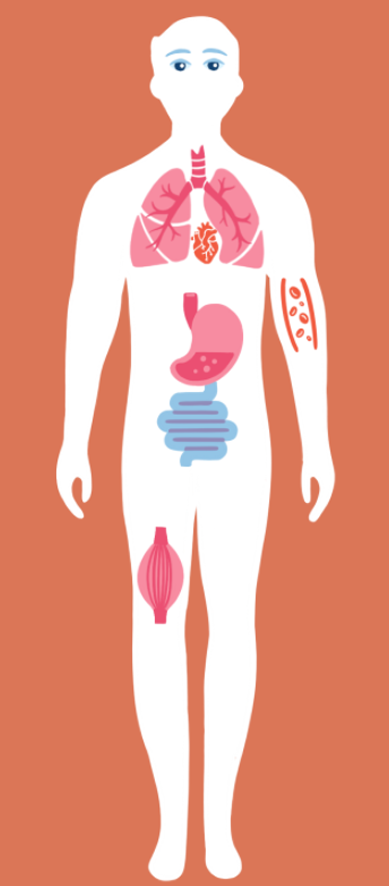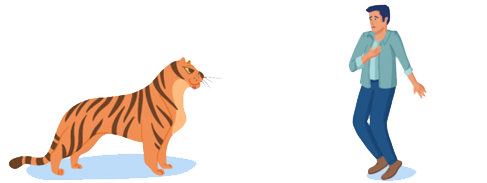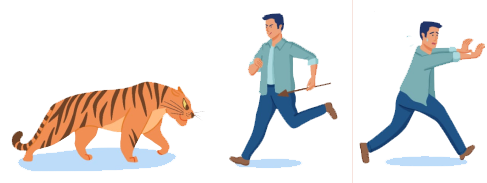The Fight or Flight Response
The fight or flight response is a process that the brain uses, when it is notified of a threat. This helps us to either confront, escape, hide, or in some cases freeze.
Anxiety is an integral part of our body’s natural process. All of us experience anxiety at some point in our lives—it is a mechanism that our mind and body use to prepare ourselves for a stressful situation.
The fight or flight response is a process that the brain uses, when it is notified of a threat. This helps us to either confront, escape, hide, or in some cases freeze.
These responses in turn, trigger a range of physical and emotional responses in our body that help us make the decision we see fit for the situation, and see it through.
Evolutionarily, human beings were faced with all kinds of danger. For instance, coming across a tiger while hunting, or gathering food.
How does this affect the body?
Eyesight
Pupils dilate and peripheral vision reduces Improves eyesight and increases focus and concentration
Heart and lungs
Heart and lungs function increases, heart beats faster and breathing becomes shallow More oxygen reaches the brain for quick decision-making
Muscular system
Muscle tension increases and blood flows towards muscles Quickens movement and redirects oxygen & minerals to muscles

Digestive system
Digestive system slows down and bladder & sphincter muscles relax Blood goes to other areas and no breaks for food or bathroom
Circulatory system
Blood pressure, blood sugar, fat and blood clotting function increases Offers the body an extra boost of energy and prevents excess blood flow in case of an injury

